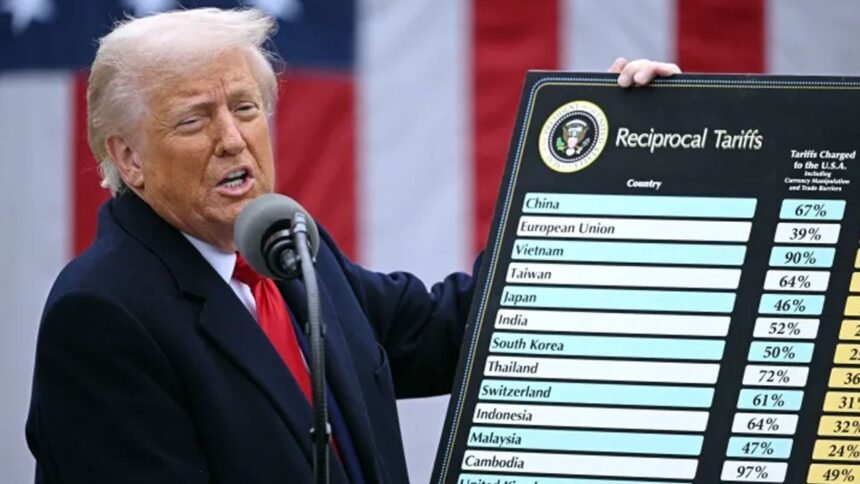When Donald Trump became the 45th president of the United States, the “Trump economy” quickly became a focal point of conversation. Often attributed to his business acumen, the Trump economy is seen as a unique blend of capitalist strategies and political policy that reshaped many aspects of the American economic landscape. But beyond policy and governance, Trump’s wealth and business ventures are vital to understanding the true scale of his financial impact. This blog will take an in-depth look at the Trump economy, focusing especially on his assets and their estimated net worth. By analyzing the wealth Trump accumulated during his career, we can gain a better understanding of his financial legacy and its impact on the U.S. economy.
The Trump Economy: A Snapshot of Growth and Challenges
Donald Trump’s business empire spanned a variety of industries, from real estate to entertainment, branding, and beyond. His financial influence reached both domestic and global markets, and his presidential tenure further bolstered this belief. The Trump economy is often discussed in terms of stock market performance, tax cuts, and deregulation, but what truly set his approach apart was his ability to leverage his own assets to fuel economic growth.
Trump’s assets were more than just real estate properties; they represented a carefully curated image of wealth and power. However, Trump’s financial dealings have been clouded by controversy, legal battles, and fluctuating valuations, making it crucial to dissect the true worth of his holdings to assess the real scale of the Trump economy.
Key Assets of the Trump Empire
Donald Trump’s wealth can be broken down into multiple assets, each contributing significantly to his overall net worth. Below is a table detailing some of his most significant holdings and their estimated value:
| Asset | Estimated Net Worth (USD) |
|---|---|
| Trump Tower (New York) | $500 million |
| Mar-a-Lago (Florida) | $350 million |
| Trump International Hotel (DC) | $200 million |
| Golf Courses (Global) | $1.4 billion |
| Trump Organization (Overall) | $3.5 billion |
| Real Estate Properties (Various) | $2.3 billion |
| Licensing and Brand Value | $2.5 billion |
These assets have been the cornerstone of Trump’s financial portfolio. The values are estimates based on publicly available information, market performance, and expert analysis. However, many of these assets, such as Trump Tower and Mar-a-Lago, have faced varying degrees of valuation over the years, often influenced by real estate market conditions, legal challenges, and public perception.
Trump’s Real Estate Legacy
The Trump Organization, founded by Donald Trump’s father, was the foundation of his wealth. Over the years, Trump expanded his real estate portfolio by acquiring iconic properties such as Trump Tower in New York and various golf courses around the world. The valuation of these properties has been a matter of much debate, with experts estimating Trump Tower’s worth at $500 million, and the golf course portfolio at over $1.4 billion.
Real estate remains one of the key contributors to the Trump economy. His ability to acquire and manage high-profile properties gave him leverage in numerous business dealings, while also fueling the perception of wealth that was central to his public image.
However, Trump’s real estate empire was not without challenges. Many of his properties faced legal disputes and declining value, especially after his presidential term ended. For instance, the Trump International Hotel in Washington D.C. experienced a drop in profitability post-2016, as the business model became entwined with his political brand.
The Role of Trump’s Brand and Licensing Deals
In addition to real estate, Trump’s brand played a pivotal role in his financial success. Licensing his name to products, buildings, and properties allowed him to generate massive income without the need to directly manage the properties. This strategy allowed Trump to expand his influence and wealth while mitigating some of the risks associated with direct ownership.
Trump’s licensing deals have included a range of products, from bottled water to clothing lines, as well as partnerships with various real estate developments. The Trump name itself became a lucrative asset, with estimated value upwards of $2.5 billion. Licensing his brand to international projects further solidified his global reach, contributing to the economic power of the Trump brand.
However, controversies regarding the Trump brand’s public image, especially following allegations and legal issues during and after his presidency, led to fluctuations in the brand’s value. While it remains a strong asset, its value is often seen as tied to Trump’s personal influence.
The Impact of the Trump Economy on the U.S. Stock Market
During his presidency, Trump’s policies had a significant impact on the U.S. stock market. The Trump economy was characterized by tax cuts, deregulation, and a focus on reducing corporate taxes. These measures were intended to stimulate business growth and job creation.
The U.S. stock market performed well under Trump’s leadership, with major indices reaching new highs. His administration’s approach to corporate tax reform, most notably the 2017 Tax Cuts and Jobs Act, was aimed at encouraging corporate investment and spurring economic growth. While some economists argue that the long-term benefits of these measures were overstated, there’s no doubt that the stock market saw short-term gains during his tenure.
However, Trump’s economic policies also had a downside. His trade wars, particularly with China, created volatility in the global economy. The tension surrounding these trade wars caused significant market uncertainty, which at times led to downturns. Ultimately, the Trump economy’s legacy is a mixed bag—marked by both impressive market gains and significant challenges.
Trump’s Influence on the U.S. Labor Market
One of the hallmark features of the Trump economy was its impact on the U.S. labor market. During his presidency, Trump focused on reducing unemployment and increasing job growth, often boasting about record-low unemployment rates, particularly among African Americans and Hispanics. His administration worked on reducing business regulations, making it easier for companies to hire and expand their operations.
The Trump economy also saw an increase in wage growth, which was seen as a positive indicator of economic expansion. However, critics argue that the benefits of these policies were unevenly distributed, with many working-class Americans seeing only modest wage increases while wealth inequality continued to grow.
Conclusion: The Trump Economy’s Lasting Legacy
In conclusion, the Trump economy is defined by his strategic focus on wealth accumulation, real estate development, branding, and economic policy reforms. His wealth, driven largely by his real estate portfolio and brand licensing, continues to play a significant role in his economic influence. Despite controversies and fluctuating asset values, his business empire remains formidable.
As an expert in economics once said, “Trump’s approach to business and economics is as much about perception as it is about substance.” This quote captures the essence of the Trump economy, where the focus was often on creating an image of success, which translated into tangible financial achievements. The legacy of the Trump economy is complex, and its full impact will be felt for years to come.
Through examining his assets and the underlying factors driving his economic influence, we gain valuable insights into the multifaceted nature of wealth and its relationship to political power.






